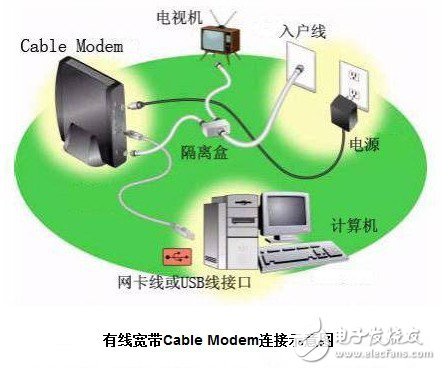What is wired broadband, and some users may not be very familiar with it. Below, let's take a brief look at the difference between wired broadband and familiar ADSL.
Both Cable Modem and ADSL are broadband technologies that provide Internet access. The main difference between the two technologies is that the transmission medium is different from the modulation method. The Cable Modem is transmitted through a cable TV cable, and ADSL is transmitted through a telephone line. Cable technology is tens of times higher than ADSL in terms of bandwidth theoretical value and scalability, so Cable Modem has an excellent broadband advantage.

Many users are curious as to why wired broadband can transmit both TV signals and Internet services. Why do they not affect each other? Next, the author will uncover this mystery for you.
When using the Cable Modem to transmit data, the user uses one of the existing cable lines. Currently, the coaxial cable is used, and the entire cable can be divided into three broadband. They are used for Cable Modem digital signal uploading, digital signal downlink and TV program simulation number transmission. Generally, the bandwidth of the coaxial cable is 5-750MHz, the digital signal is uploaded to 5-42MHz, the analog signal is transmitted to 50-550MHz, and the digital signal is transmitted to 550-750MHz. In this way, the digital data and the analog data will not conflict with each other, and of course they can be transmitted at the same time. This is why users can watch TV programs while they are connected via wired broadband.
Lithium Battery 2Cr5,2Cr5 Lithium Battery,2Cr5 6V Lithium Battery,6V 2Cr5 Lithium Battery
Jiangmen Hongli Energy Co.ltd , https://www.honglienergy.com
